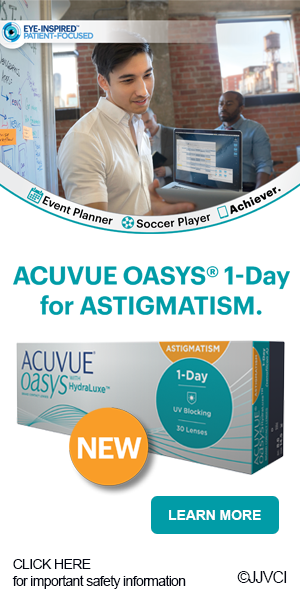
by Optometric Insights | Aug 5, 2018 | Contact Lens Spectrum, Contact Lens Today, Publications
Jerry had come into the office four years ago and was fit into scleral lenses because of his high astigmatism. Since then, he has been faithful in coming back to the office for his visits and for minor modifications to his lens power and fit. Now, Jerry is 41 years...

by Optometric Insights | Jul 22, 2018 | Contact Lens Spectrum, Contact Lens Today, Publications
Stacy was a new mom when I first met her. She had worn contact lenses in college but had switched over to glasses when she became frustrated with the rotation that her toric lenses were giving her. A busy professional woman, she did great in her glasses that corrected...

by Optometric Insights | Jul 4, 2018 | Contact Lens Spectrum, Optometry Times, Publications, Review of Cornea and Contact Lens
When we stop to think about how our GP and custom soft contact lenses are made, we can be amazed at the work that goes into creating these wonderful medical devices that give our patients sight. When I sit down to work with one of my patients on a new fit, I tend to...

by Optometric Insights | Jul 4, 2018 | Contact Lens Spectrum, Optometry Times, Publications, Review of Cornea and Contact Lens
One of my favorite things to contemplate in business is the Pareto Principle, more commonly known as the 80/20 rule. This principle states that around 80% of the effects come from 20% of the causes. This has been used to explain land ownership to gardening and is...

by Optometric Insights | Jul 3, 2018 | Contact Lens Spectrum, Optometry Times, Review of Cornea and Contact Lens
Centers of excellence have become a buzzword in eye care over the last five years. One company even awarded a plaque after its product was purchased because, with its product in hand, the purchasing eyecare practitioner must be excellent. But what really is a center...

by Optometric Insights | Jul 1, 2018 | Contact Lens Spectrum, Contact Lens Today, Publications
One of the worst things about multifocal contact lenses is that they increase the amount of aberrations that patients experience. The many reasons for this include pupil size problems, decentration of the lens, and altered tear film in a population more prone toward...










